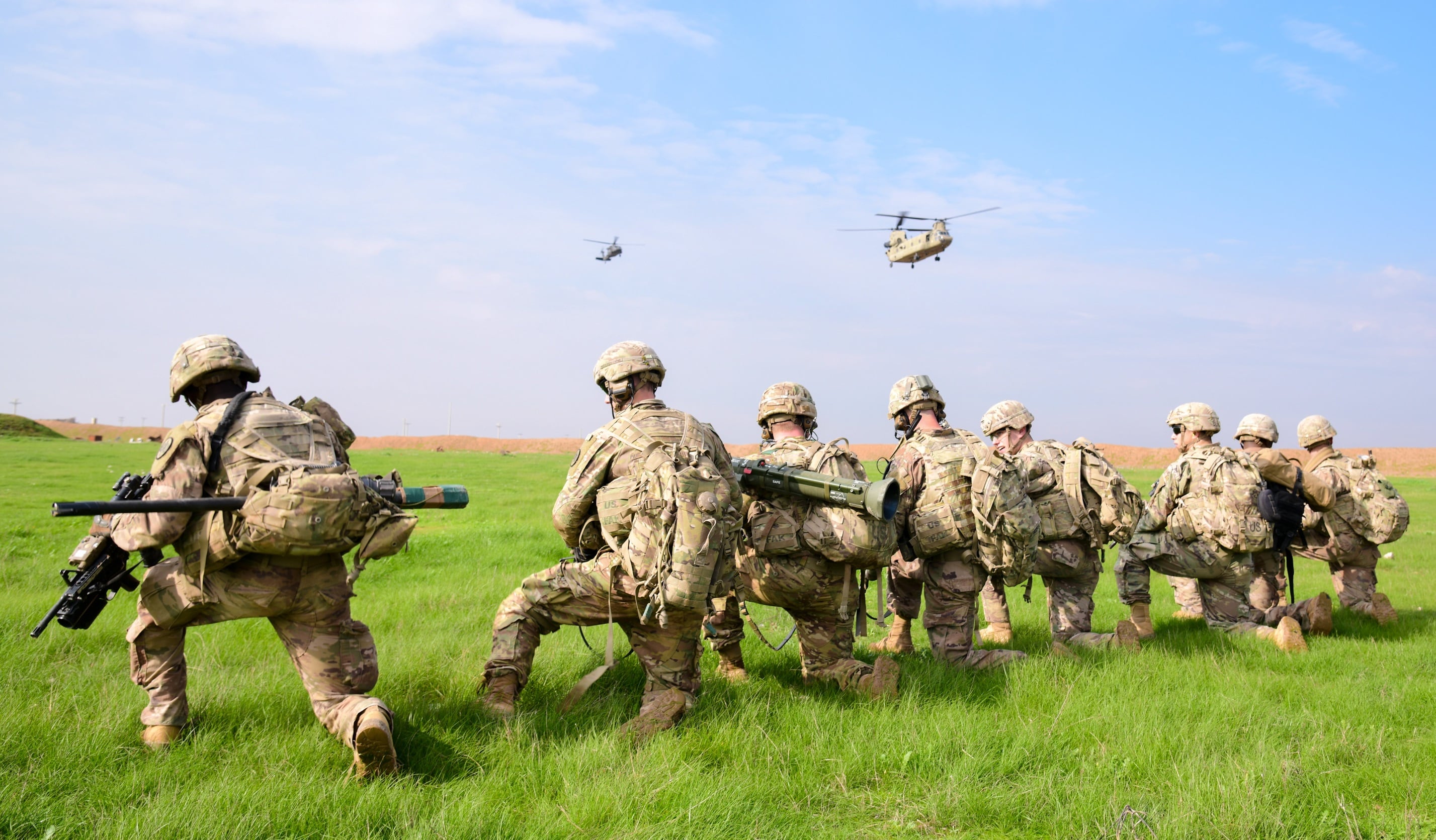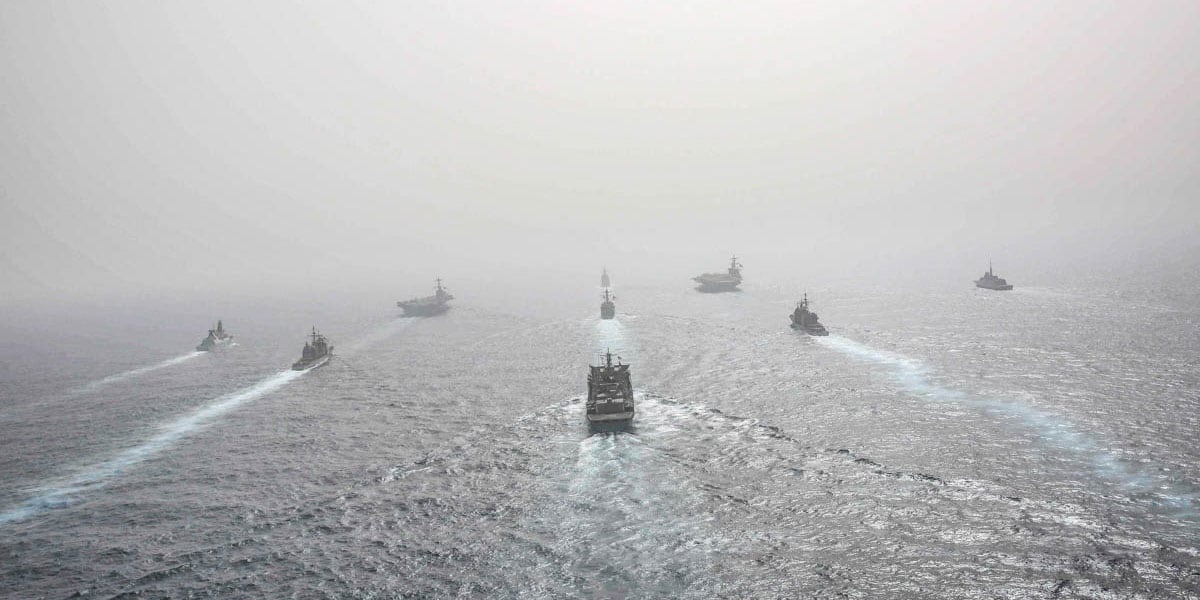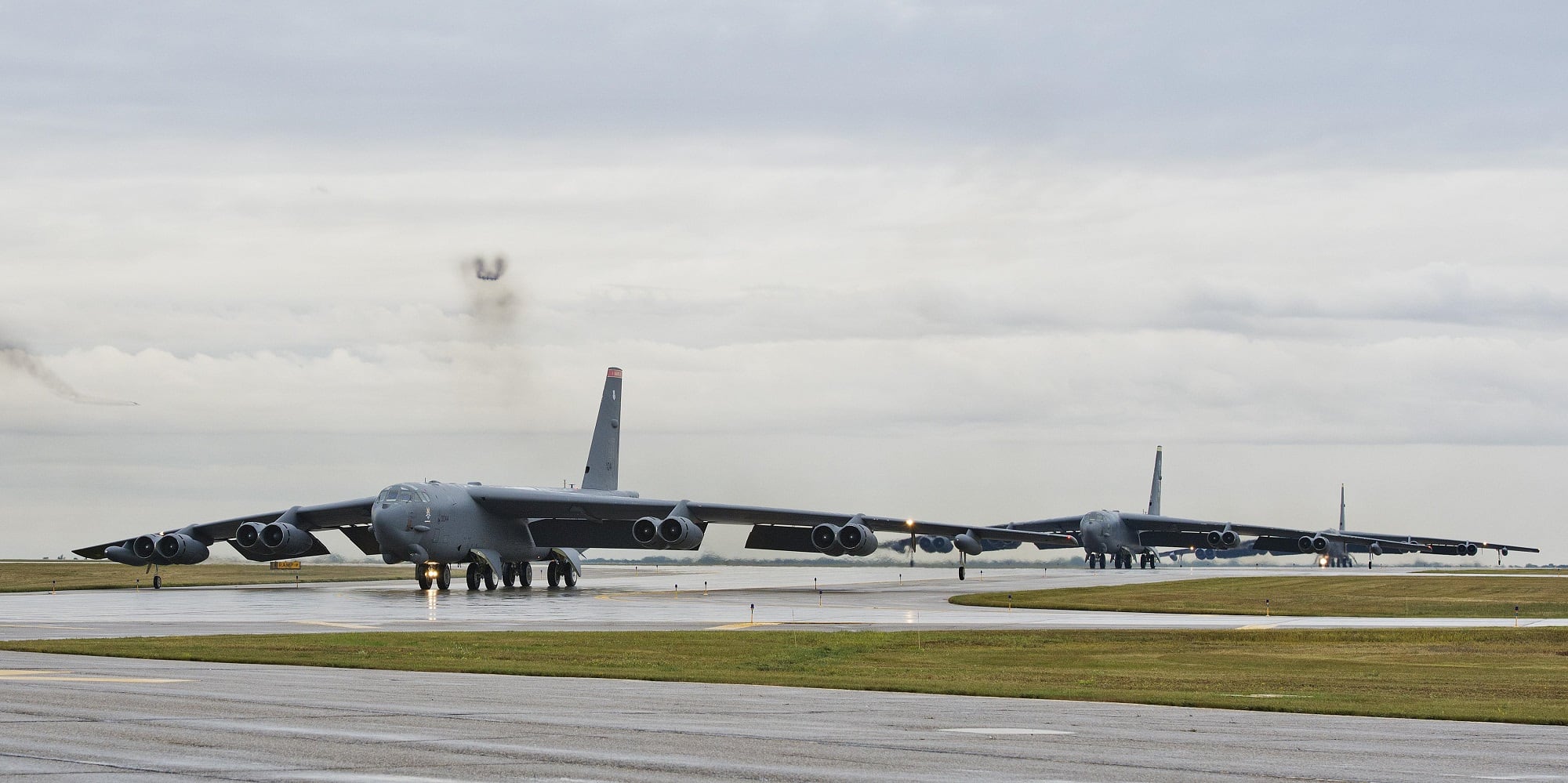The Pentagon is deploying a B-52 bomber task force alongside the Abraham Lincoln Carrier Strike Group to the U.S. Central Command area of operations amid threats of “heightened Iranian readiness to conduct offensive operations,” according to defense officials.
While the carrier strike group was already planning to visit the region, Acting Secretary of Defense Patrick Shanahan ordered the vessels to go earlier than scheduled, canceling a port visit to Croatia, and expediting transit to the region, the Pentagon said in a series of responses Tuesday to provide more insight into a decision announced this weekend.
While the U.S. Air Force is also deploying B-52 bombers to the region, CENTCOM declined to say which squadrons are being tapped.
Officials did not provide a specific timeline for either deployment, nor would they say where specifically the aircraft and ships would operate, though carrier strike groups have sailed through the Arabian Sea and the Persian Gulf on similar missions.
The exact nature of the threat that was received was also not provided by the Pentagon. The mission comes as Iran is expected to announce plans to withdraw from parts of the 2015 nuclear deal this week, one year after the U.S. abandoned the agreement.
The shift in assets to CENTCOM was in response to “recent and clear” indications that the Iranian military or its proxy forces were making preparations to possibly attack American troops in the region, according to Navy Capt. Bill Urban, a CENTCOM spokesman.
“U.S. Central Command requested the additional forces to protect U.S. forces and interests in the region and to deter any aggression," Urban said. "A number of factors define credibility but they are all related to the sources and methods through which information is obtained, which is not something we are going to be able to talk about.”
RELATED

The possible attack includes “threats on land and in the maritime,” Urban said. "We are not going to be able to provide detailed information on specific threats at this time.”
Urban added that commercial shipping has been alerted to the threats.
The carrier strike group has more than 6,000 sailors attached to it, according to Navy Lt. Cmdr. Joe Hontz, U.S. European Command spokesman.
The vessels in the strike group include the aircraft carrier Abraham Lincoln with its carrier air wing, the cruiser Leyte Gulf, and the destroyers Bainbridge, Gonzalez, Mason and Nitze.

National Security Adviser John Bolton said that the bombers and vessels are being sent to the region to deliver “a clear and unmistakable message to the Iranian regime that any attack on United States interests or on those of our allies will be met with unrelenting force.”
“The United States is not seeking war with the Iranian regime, but we are fully prepared to respond to any attack, whether by proxy, the Islamic Revolutionary Guard Corps, or regular Iranian forces,” Bolton said in a statement Sunday.
Asked about what was causing the U.S. response, Secretary of State Mike Pompeo was scant on details Monday.
“I don’t want to talk about what underlays it, but make no mistake, we have good reason to want to communicate clearly about how the Iranians should understand how we will respond to actions they may take," Pompeo said, adding that the threats are separate from deadly events that took place in Gaza and Israel recently, the Associated Press reported.
Kyle Rempfer was an editor and reporter who has covered combat operations, criminal cases, foreign military assistance and training accidents. Before entering journalism, Kyle served in U.S. Air Force Special Tactics and deployed in 2014 to Paktika Province, Afghanistan, and Baghdad, Iraq.




